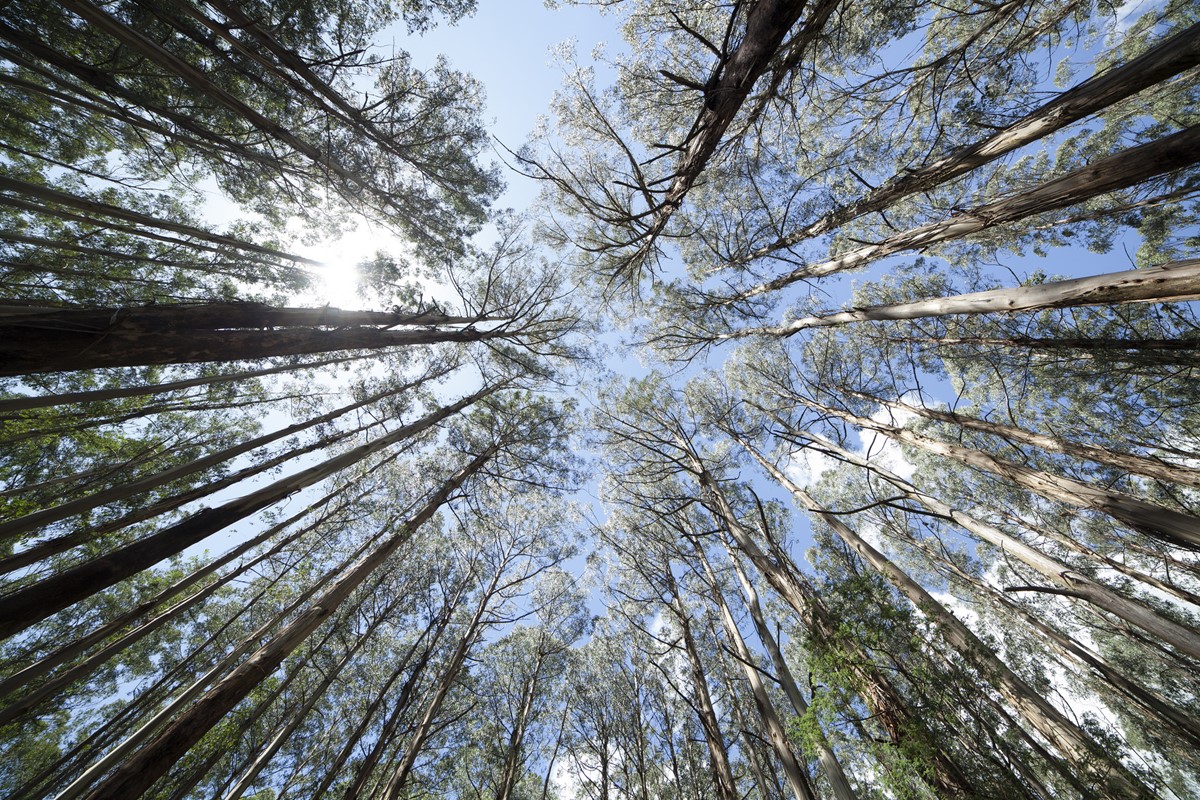Conserving a great forest
You’re in a forest of the tallest flowering trees in the world, surrounding an ancient volcano. Sparkling waterfalls topple over its rim, against a backdrop of rocky, jagged peaks.
If you were a bird, you could fly among the treetops, sometimes 100 metres up into the sky. You could peek inside a dark tree hollow and see a family of tiny possums snuggled in their nest of shredded bark.
Back on the ground, the landscape reveals to you crystal-clear streams, with tiny darting fish called Barred Galaxia, a name from another world.
But you’re right here on Earth. In fact, you’re only 90 minutes away from Melbourne’s CBD.
And you’re in one of Victoria’s prime native logging areas. Some of those towering trees are destined to become paper, or other disposable timber products.
However, if Professor David Lindenmayer from the Fenner School of Environment and Society at ANU has his way, you would be in the Great Forest National Park, a wildlife haven and bush “playground” for aerial walkways, bike riding, walking, birdwatching, four-wheel driving, camping and zipline tours in the Victorian Central Highlands.
“When you have a public asset, you need to manage that asset for the maximum public good,” Professor Lindenmayer explains.
It’s not just the public who will benefit from the Great Forest National Park.
Protecting this region would also stop logging of the disappearing habitat of the critically endangered Leadbeater’s possum, which lives exclusively in this region, nesting in hollows of very large old trees. The Mountain Ash tree takes over 100 years to start developing these hollows.
Professor Lindenmayer says the scientific and economic case for the National Park is “absolutely compelling”.
Using a world-first environmental accounting approach, he and other researchers have shown that the value of these forests for biodiversity, and also water, carbon storage and for tourism far exceeds the value of these forests for paper production. The water value alone is more than 39 times that of the timber, he says.
“I want the public to support this process for fundamental change in the way these forest landscapes are managed and conserved. It’s important that politicians and policymakers see there is an enormous groundswell of community support, and I know that there is for these fundamental changes and reforms.”
Professor Lindenmayer is not alone in wanting a Great Forest National Park. Supporters include Sir David Attenborough and primatologist Dr Jane Goodall, who has written of the park, “If we fail now, what future will we have chosen for our grandchildren and their grandchildren?”
Please join Professor David Lindenmayer as he presents the Great Forest National Park proposal at an ANU Alumni drinks evening in Melbourne.

